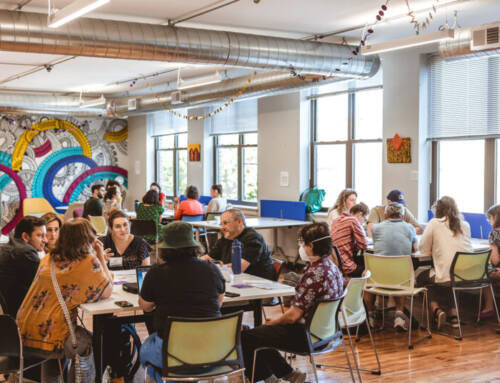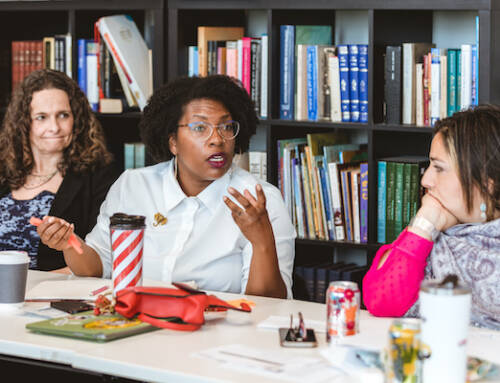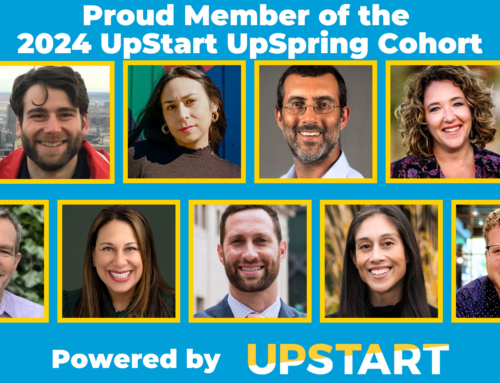The Seders Four Elements of Creative Education
The Pesach Seder, perhaps the most popular of Jewish rituals, is a visceral and meaningful educational experience. Maybe this is why it has remained so widely celebrated within the Jewish community. As the professional Jewish community continues to struggle with the most effective ways to keep our tradition vibrant and alive, a task that demands tremendous creativity, we can learn a lot from the Seder itself. The Seder is a model of creative education, which elicits the kind of experiences and ideas critical for the constant renewal of Jewish life. Here are four core educational elements that the Seder embodies, which echo best practices in todays world of innovative education:
I. Constraints Drive Creativity: Perhaps counter-intuitively, it is only when we are given clear limits and structures that we can be our most creative, innovative selves.
II. Balance of New & Unfamiliar: The Seder begins with a familiar ritual, Kiddush, and immediately moves into strange terrain washing the hands without a blessing. This juxtaposition of the familiar and the unfamiliar, of the comfortable and the unusual, which occurs throughout the Seder (motzi matzah to marror; hallel to nirtzah), is critical in eliciting creativity.
In their December, 2012 article in the Harvard Business Review, Reclaim Your Creative Confidence, David and Tom Kelly write: You break challenges down into small steps and then build confidence by succeeding on one after another. Creativity is something you practice, not just a talent youre born with. The Seders concrete steps, some familiar, designed so that we can immediately succeed, and some uncomfortable, which push us to stretch and grow, is a powerful model of the kind of educational experiences we need in order to elicit the creativity our community needs.
III. Supply the Props; Relax the Time & Space. Milton Chen, in his book Education Nation: Six Leading Edges of Innovation in our Schools, argues that the old view of education happening within the four walls of the classroom, Monday through Friday, 8am to 2pm, with some homework thrown in after school is ultimately erroneous, and even harmful, in todays world. The institution of school, he writes, is gradually shifting to enable learning anytime, anywhere. The role of the educator must then be radically re-conceived. One way to begin to think about the role of the educator is as the one who provides the elements that provoke curiosity, creativity, and curates the learning. The Seder provides all of the elements necessary to learn about the story of the Exodus from Egypt, and to connect that story to our own lives. It provides the props; and yet it allows us to design the space, and to fill the flexible amount of time perhaps the most loosely timed structure in the Jewish calendar. There is no obligation of space set-up for the Seder though we tend to sit around the table, there is no reason why we couldnt move from room to room, sit on the floor, or hike in the desert with our Haggadot, matzahs, marror, charosset, karpas, and shank-bones. We could benefit from re-thinking the design of our educational environments, focusing more on the elements of content, ideally experiential, that we put before our students, and then stepping back, allowing those students to use the learning materials in ways that most resonate with them.
IV. Connection to Self. The seminal moment of the Seder is the point at which we remind ourselves that it is our obligation, in each generation, to see ourselves as if we had come out of Egypt. This imperative is actually a charge to ensure that Judaism remains vibrant and relevant in each generation. The Seder could easily have been a ritual only to commemorate the Exodus from Egypt. But it is more. It instead is a ritual that embodies the way in which we connect to this particular story, thereby challenging us to connect our own lives to our tradition and its practices throughout the year. Design Thinking describes itself as human-centered, and has been so successful because of its insistence that designers truly immerse themselves in the needs and experiences of their constituencies. We must remember that in order to keep Judaism relevant, it needs to connect deeply to peoples lives. In his book Taking Hold of Torah, Arnie Eisen, current Chancellor of the Jewish Theological Seminar, writes:
A Judaism which has nothing to say to the lives Jews actually lead is a Judaism that has ceased to be itself, ceased to be Torah. It has become nostalgia, sentiment, at best a literature with a place of honor in the history of human development. But how to enable Torah to be more than that, how to have it speak to new situations?
As Jewish professionals, as educators, it is our job to immerse ourselves, deeply, in peoples lives, and strive to understand where Judaism most meaningfully intersects with their needs. We can then help weave those links between their needs and the rich array of wisdom that Judaism has to offer.
As we prepare to celebrate Passover and to participate in the age-old ritual of the Seder, following the creative structure and mindsets that have nourished the Jews for generations, I hope that we will learn from its model, and continue to push ourselves to design the most inspiring, impactful, and creative Jewish experiences for our community.
This article is cross-posted on eJewish Philanthropy.
Our purpose is to enable entrepreneurs to bring bold Jewish ideas to light. We help them reach Up to people in new ways that are meaningful, more inclusive, and create a brighter future for our Jewish community and the world we share.






